 "/>
"/>
 "/>
"/>

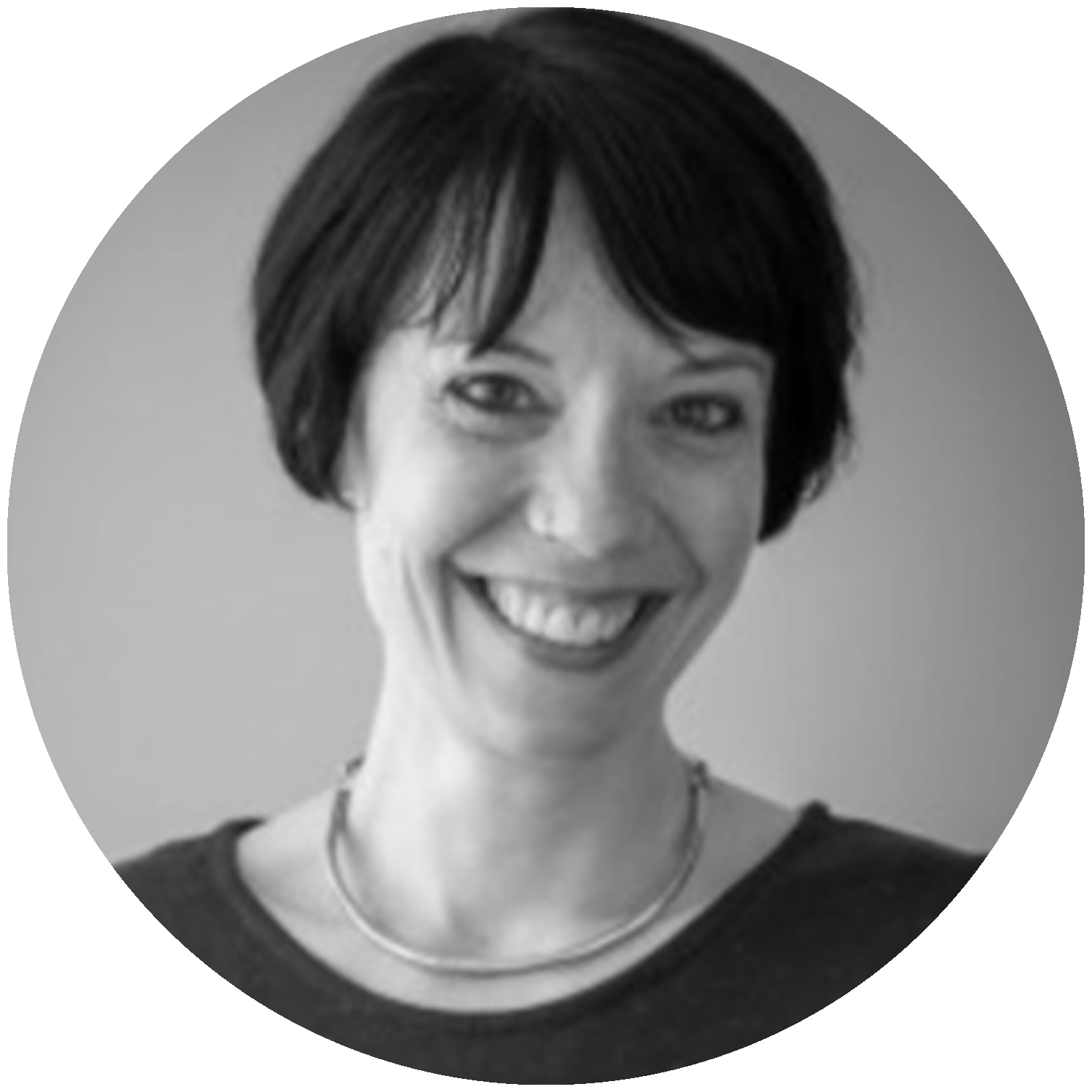
Michelle Delk
Snøhetta纽约事务所合伙人,景观负责人
景观建筑师,美国注册景观设计师
Partner, Discipline Director
LandscapeLandscape Architect, ASLA
Michelle Delk是国际知名设计事务所Snøhetta纽约事务所的合伙人和景观建筑师。她具有多学科背景,设计作品契合Snøhetta 的设计理念,即创造可促进人与环境积极关系的空间。她的作品重新定义了建筑环境所蕴含的内在美和其功能的合理性。
Michelle Delk is a passionate champion and designer of the urban public realm. Based in New York City, Michelle is a Partner and Landscape Architect with Snøhetta, an internationally renowned design firm. Her work is trans-disciplinary, evocative, and representative of a simple foundational premise shared with Snøhetta: to create places that enhance the positive relationships between people and their environments. Both aspirational and pragmatic, her work reveals and complements the sublime qualities of embedded beauty and rational functionality within the constructed environment.
在大学学习景观时,我发现艺术与美感是连接人与场地的纽带。另外,我对城市环境十分好奇,同时对人们如何与我们设计的场所进行互动也很感兴趣。当时我还不明白,但我现在意识到,创造连接人、历史、故事以及环境的空间,这就是景观设计。
—— Michelle Delk
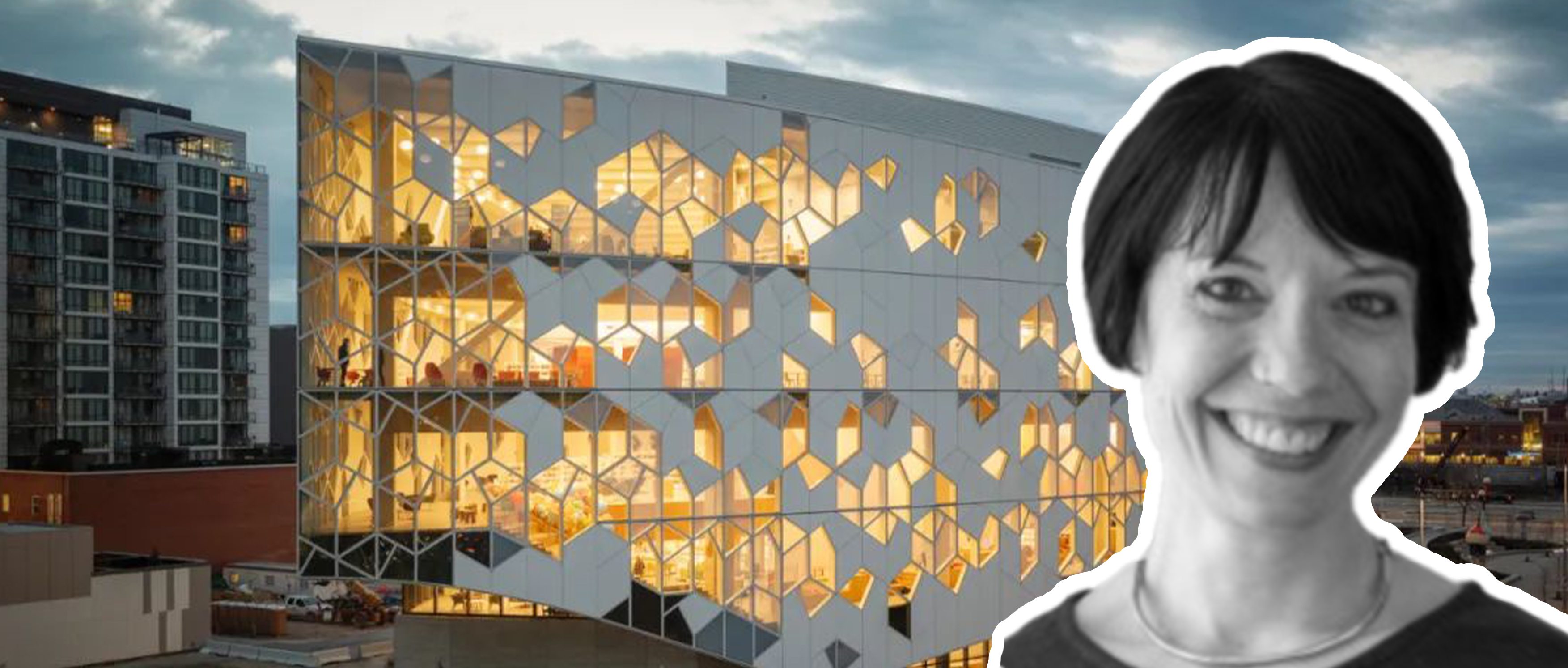
01 / 景观与建筑的边界
Landscape And Architecture
█ Snøhetta的设计作品模糊了建筑与景观的边界,特别是在Oslo Opera House项目中体现的尤为明显,比起一个建筑,它更像是一个有功能的艺术品。您能否分享一下你们是如何在设计中融合多学科的?
In Snøhetta’s projects, there is no boundary between architecture and landscape architecture, especially in the famous project, Oslo Opera House. It's more like art but has functions. Could you tell us a little bit about this discipline?
M:Oslo Opera House是一个很好的例子,当我加入团队时它就已经建成了。
我们公司主要有两个设计理念。一方面,Snøhetta对于跨学科的合作很感兴趣。我们团队中有建筑师、景观设计师、室内设计师、平面和产品设计师,每个人都有不同的观点和背景。在设计中,我们不会以消解建筑和景观之间的差异为目的。很多时候这是结果,但不是目的。
我们的目的是,不论你的领域和背景是什么,所有人都可以坐在一起,探讨最有趣的,最引人注目的,最具创新性的和可以解决项目问题的想法,因为我们对于可以创造出具有美学、功能性和识别度的设计抱有极大的热情,所做的一切都是为了可以激发出更好的设计理念。因此从项目开始到结束,所有人都互相协作,而且没有等级划分。
基于这一公司理念,当我们设计剧院时不会按照先让建筑师设计然后再让景观设计师介入这样的工作流程进行,虽然这是很多公司出于实用主义而常用的工作流程,但在Snøhetta我们一直在不倡导这样做。因为当所有的设计参与者不能同时接触这个项目时,就很难产生跨学科的自由交流。所有参与者在项目早期一同达成这个项目的设计理念是我们非常重要的文化,因此最终的设计结果也通常能展现出公众与场所之间多层次的互动可能性。不论是这个屋顶作为城市集会空间的剧院,还是我们去年在芝加哥新建成的城市轻轨上的图书馆,都产生了这样的结果。
所以,我想说的另一方面就是,我们非常欣赏和尊重每个人不同的背景和专业性。虽然让我们每个人都成为全领域的专家是不切实际的,但是重要的是大家都参与到设计概念的讨论过程。之后我们再聚焦到不同专业分工上开展设计,并努力达到最高质量的成果。专注自身领域与团队协作同样重要,这也是我们一直在努力的方向。
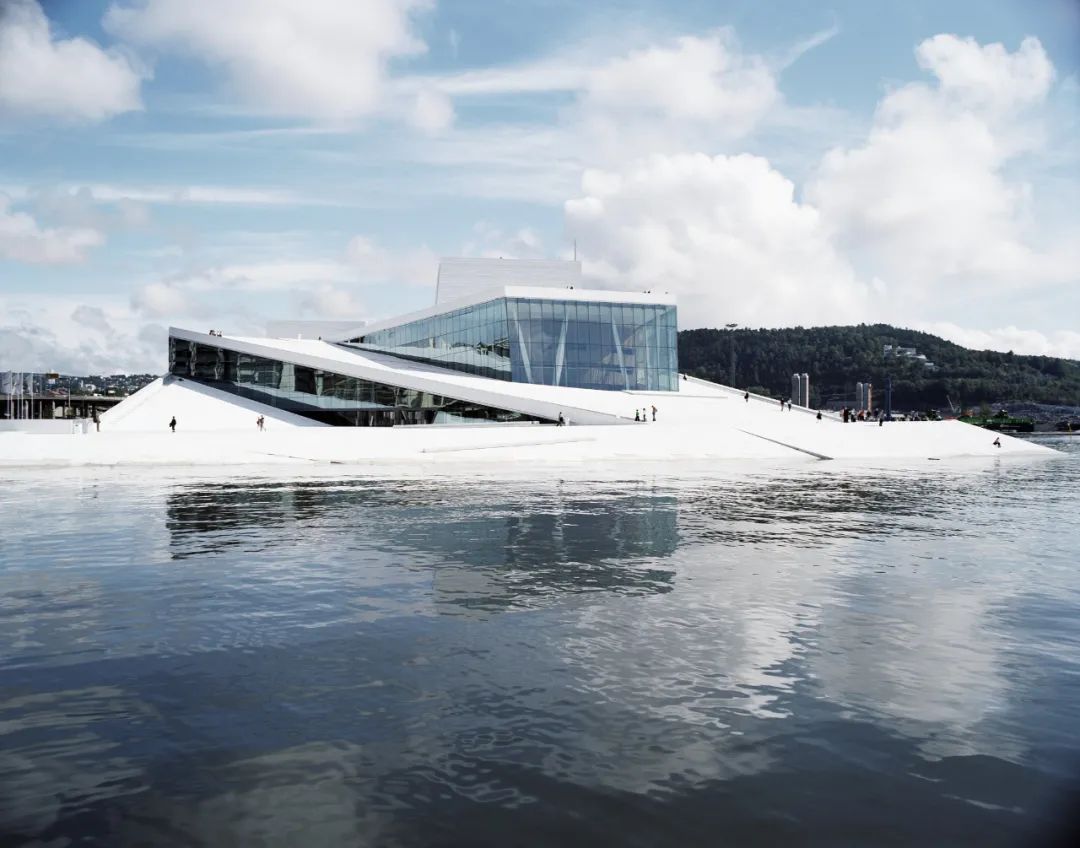
Norwegian National Opera and Ballet ©Snøhetta
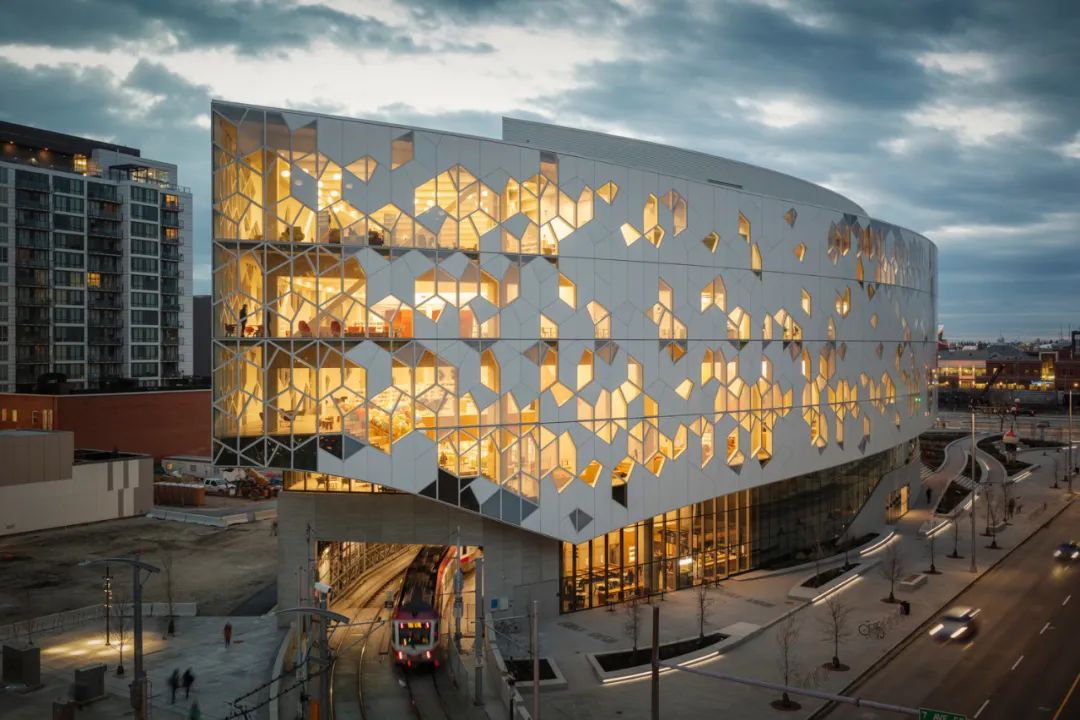
Calgary's new Central Library ©Snøhetta
Sure, Oslo Opera House is a great example. It was complete by the time I joined the firm. But I think there's a couple of important aspects on how to think and work within design.
There is an interest at Snøhetta in working together across different disciplines. There are architects, landscape architects, interiors, graphics, and product design. We all different points of view and experiences. And there's sort of two ways that I think about it. One is that the idea is we do not set out to erase the distinction between, say, building, and landscape. Sometimes that is an outcome, but it's not the goal.
The goal is to come together around a table, regardless of our disciplines and backgrounds. We look for the ideas that are most interesting, compelling, innovative, and address the program. Because we are all very excited when we can create functional responses that also embody beauty and recognize the human experience. So it's really about that idea generation. We're all at the table from the beginning and throughout the project. It's about reducing a hierarchy in how we work.
So it's not that, for example, when we have an opera that we need to design that the architects do some work and they have some ideas that they then come and get the landscape architects later and say, we have an idea of what we are trying to do. Now, how do you interface? That is a very common approach in practice, sometimes for very pragmatic reasons, but it’s what we try to avoid. But when you're not sitting next to each other, you don't have that fluidity or that ease of access. It is a deep commitment to come together early and create an idea together. So, the outcomes often embody greater access and generosity for the public to engage with places. Whether that's the opera, where the roof is a civic gathering space or other projects like the library we opened a year ago in Calgary, the new central library, with a light rail line that cut the site in half.
The other thing I wanted to mention about the way that we're working is that we really value and respect the knowledge that people build within their disciplines. It's important to work together. And then we have an idea. It's too much for any of us to be an expert in everything. Then we look to the disciplines that people have focused on and committed to and have spent our lives trying to execute work in the highest possible way. That focus is just as important as collaboration. So that's what we're trying to do.
█ Snøhetta似乎并没有一个具体的风格,但是很多时候又能一眼看出是你们的设计。你们是如何让不同的想法具有各自特点,同时又使得公司整体的风格具有可辨识性呢?
There's no specific design style, but we can still recognize Snøhetta’s work. How can you make individual’s idea shines and meanwhile keeps the style for the whole company?
M:当有了可以驱动设计的主要概念时,我们并不会直接用这个想法去转化成设计方案,而是以此为灵感。我认为这是帮助我们在最终得到独特设计方案的部分原因。
我们的项目设计概念实际上是我们的思考方式。我们可能很难说出最初的设计概念是什么,但是它为我们确定设计方案提供了线索。我想这就是为什么我们没有一个设计手册来告诉你Snøhetta的设计是什么样的,但是我很肯定你会看到这些线索一次次地出现在我们的项目中。
其中一个很重要的线索就是,我们总是在想如何让更多人可以体验到一个空间。以我们大剧院的项目为例,人们并不知道或是很难发现,当围绕着建筑物走一圈,建筑就像被窗户和玻璃“打开”了。人们可以透过它们看到建筑内部发生的事情,看到道具制作、服装制作等等的场景,这些都像是表演里魔幻情节带来的体验一样。但是我们并不总是从这种角度来思考。
因为体验并不只是你可以进入大剧院内部或是观看一场表演,它更广泛的意义可以是带领人们了解幕后发生的事情。也许有一个爱动手制作东西的人,他之前并不了解剧团背后有着道具制作的工作,但正因为在这里看到了,所以他真正想做的事情开始变得有意义;也许有对表演感兴趣的人,最终加入了芭蕾舞团或是歌剧团;也许……。目睹这些平时隐藏在建筑内部的事情让人们受到邀约,获得感召。
你会发现我们所做的建筑和景观设计都在回应我们希望人们参与其中这个线索。因此,通常可能会看到很多建筑内外的转接空间,这些空间既具有使用功能,又引导人们进入。这些都是我们设计的线索,如果你仔细观察就会发现我们项目的共同点。
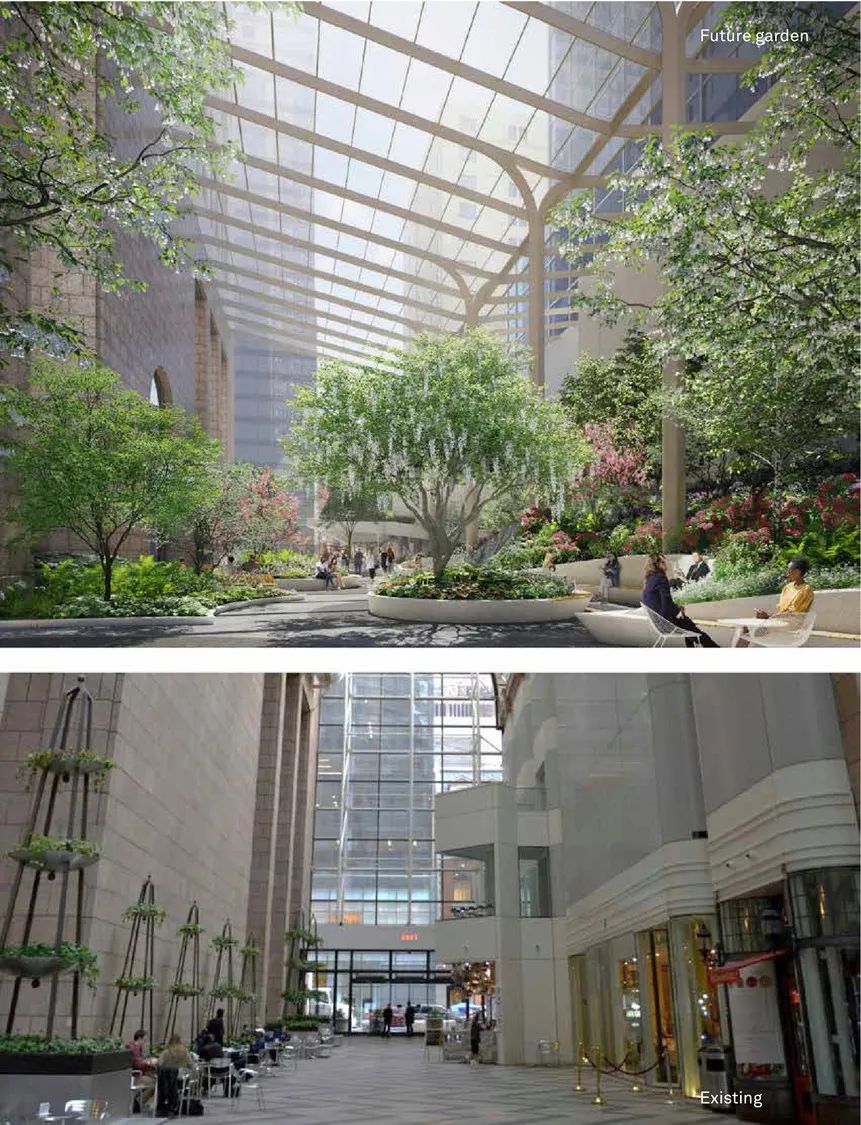
550 Madison Public Garden, ©Snøhetta
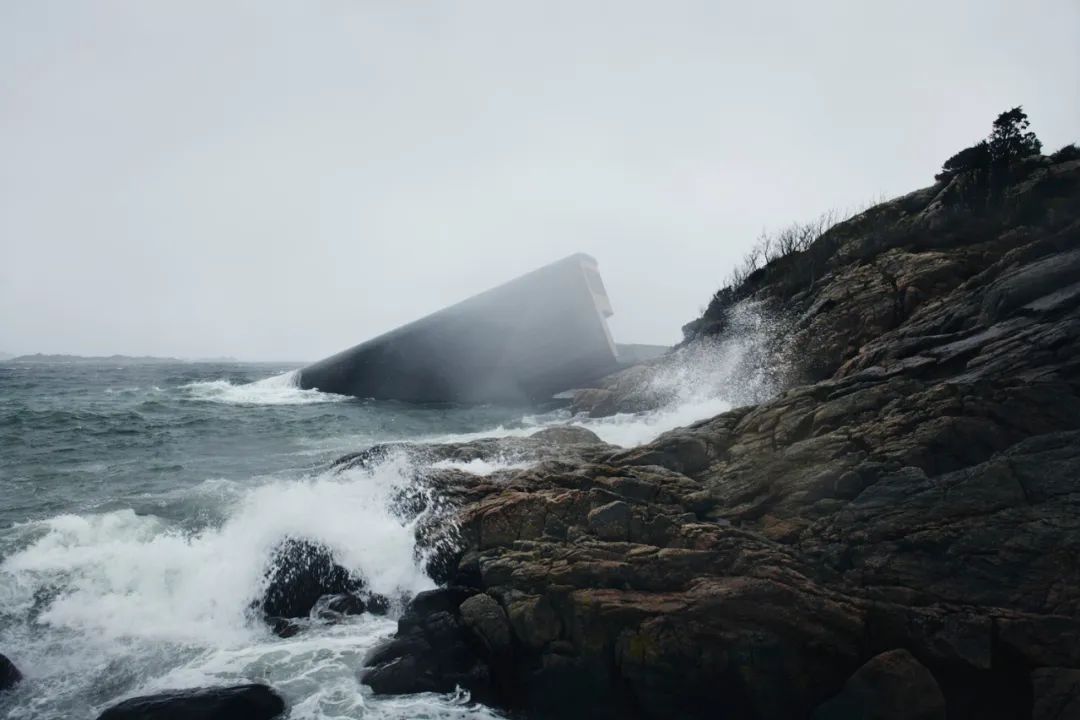
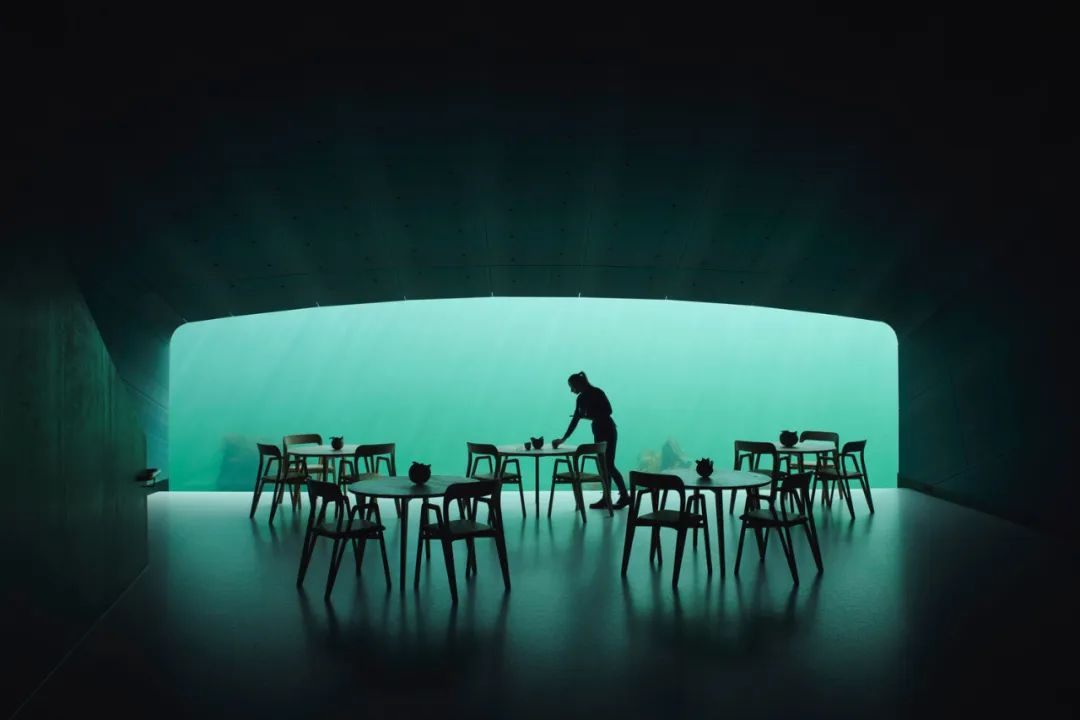
“Under” – Europe’s First Underwater Restaurant ©Snøhetta
When we think about a concept or an idea that is driving a design, I think part of what helps us arrive at somewhat unique solutions is that we don't rely on an idea being directly translated. We rely on it as an inspiration.
So when we talk about concept design on a project, we’re talking about the concept of our way of thinking. The viewer may never actually be able to tell you what that original concept is, but it gives us the thread or the connection to work around. So, I think that is one reason why we don't have a series of design handbooks where you can necessarily see what a Snøhetta design looks like. But I do think you see threads and the threads come out overtimes.
The idea is that we're really interested in how you can open up greater access. So, going back to the opera, what people often don't know or don't see right away is that when you walk around the perimeter of that building, we opened it up with using windows and glass. We opened up views into the back of house places where people are building sets, making costumes, and doing things that are part of the magic of the performance when you go to see a show. But we don't always think about that or recognize that.
So, access is not just being able to go inside or being able to afford a show, but access in a broader sense, helps people see what's happening behind the scenes. And maybe there's someone that they never knew about, that they would have a future being a part of ballet or an opera because they love building things and what they really want to do is beginning to make sense. And to see these otherwise hidden activities and witness them is a part of that invitation.
So, I think you start to see responses in both our architecture and landscape that are about bringing people in and inviting people to participate. And so that often is maybe seeing more visibility inside the building or to a space outside that is intended to be a place to occupy and play as well as the way that you enter a space. I think those are some of the threads that if you look closely that you can start to see through a commonality in the work.
█ 听说您在小时候时就接触到了景观和建造,您是如何走上景观设计之路的?
I know that you had a lot of resource in communicating with landscape and infrastructure in your childhood. How did you take a journey to landscape architecture?
M:小时候,我其实并不知道我未来会成为一名景观设计师,但当我每每在职业发展过程中回顾过去,会发现景观从我的童年开始就一直贯穿在我的生活中,之后我就意识到了那些当时并不起眼的经历与现在的联系。
我在北爱荷华州的一个乡村环境中长大,那里人口不多但是景观资源丰富。我和所有的孩子一样,把空闲时间全都花在探索室外环境和想象世界的样子上。不过不同的是,我在很小的时候就开始做一些景观构筑物了。那时候我大概7、8岁,我记得我父母曾砍倒了一棵树,砍下的树枝都堆在我家后院。在一个冬天,我突然想做一个属于自己的冰屋。我就用所有的树枝做了一个圆顶结构,然后把雪拍在上面,在顶上还留了一个洞,这样就可以在里面生火,于是那个冬天我在那个小小的庇护所里待了好几周。我想,我对于改变环境以及体验环境的兴趣是贯穿了我整个职业生涯的。
不过,我是上了大学之后才知道的景观设计。在那之前,我都没有听说过这个行业,因为在我长大的地方,那里并没有公认的景观设计,所以我一直在探索我喜欢从事的行业。整个青葱时代,我都十分热爱艺术,并且一直在学习艺术知识和制作艺术品。我发现大地艺术家的作品之所以如此鼓动人心,是因为他们在简单的景观环境中所创造出了远超其环境本身的体验。比如说Christo创作的Running Fence和Robert Smithson 创作的Spiral Jetty还有其他的景观作品,它们都向我传达了同一个思想,就是我可以让人们以全新的方式看待周遭的景观,可以通过景观设计讲述一段故事,一段历史乃至表达一个观点。大地艺术家们曾同我们现在一样,思考着周边的环境。所以我们现在做的并不是一个新的事情,只是运用了不同的方法。
在大学学习景观时,我发现艺术与美感是连接人与场地的纽带。另外,我对城市环境十分好奇,同时对人们如何与我们设计的场所进行互动也很感兴趣。当时我还不明白,但我现在意识到,创造连接人,历史,故事以及环境的空间,这就是景观设计。
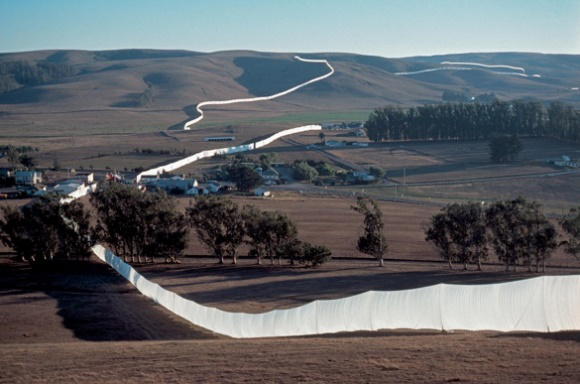
Christo and Jeanne-Claude Running Fence, Sonoma and Marin Counties, California, 1972-76 Photo: Wolfgang Volz ©1976 Christo
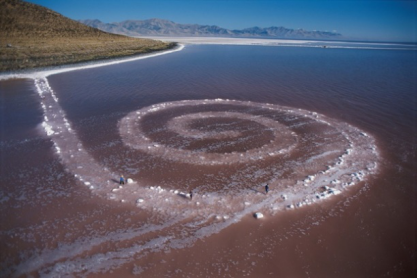
Robert Smithson, Spiral Jetty, 1970.
©Holt/Smithson Foundation and Dia Art Foundation/Licensed by VAGA at Artists Rights Society (ARS), NY. Photo: George Steinmetz
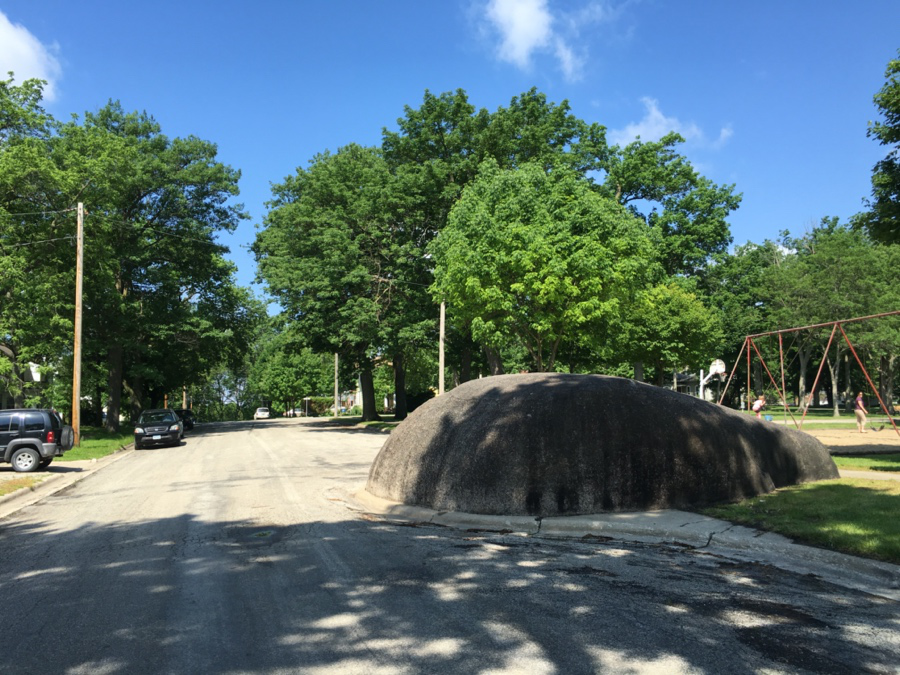
Boulder Park, Nora Springs, IA
I certainly didn't know as a young person that I would be a landscape architect, but I think it's been helpful at different points in my career to look back at those experiences that really stand out, that have come throughout my childhood and my entire life. Then you start to see these connections that you didn't know meant anything at the time that you were experiencing it.
When I was young, I grew up in a very rural part of northern Iowa. There's a lot of landscape, but not a lot of people. I spent all my free time outdoors exploring, imagining worlds as any child does. But I started making things in the landscape at a very young age. I remember that my parents had a tree cut down for some reason. For a while, all the branches and everything was in our backyard. And one winter I decided to make my version of the igloo. I was seven or eight or something. And I remember I took all the branches and I built this dome structure and packed snow around. It had an opening because you can build fires inside. I went indoors and got some matches. And I built this little shelter that I just hung out for however many weeks it lasted through the winter. But I think that connection to an interest in shaping the land and just experimenting has been threaded throughout my whole career.
I learned about landscape architecture after I went to undergraduate school. Before that, I hadn't heard of it as a profession. There weren't a lot of recognizably designed landscapes in the area where I grew up. So I was trying to figure out what I was interested in. All throughout my youth, I loved art. I was always learning about art and making things. I learned about earthwork artists which were just so incredibly powerful and inspirational to me because they're making new experiences out of what they found or introducing something very simple into the landscape, such as Christo’s running fence or Roberts Smithson’s spiral jetty. And many of these places throughout my life, passed me the idea that you can help people see the landscape around them in a new way. And you can bring out stories and histories and a point of view. As earthwork artists, they're thinking a lot about the environment at that time, just as we are today. What we're doing today isn't new. We're just doing it in a little bit different way.
When I learned about landscape architecture in college, I started to find that the thread was between art and beauty and what draws us to places and connects us to places. And I also had this strong curiosity and interest in urban environments and how people interact with places that we make. I didn't know then, but I figured out that is landscape architecture. We make places that connect people, history, stories, and environment.
02 / 跨学科的设计实践
Transdisciplinary Practice
█ 你可以介绍一下Snøhetta的纽约办公室么?和其他的办公室相比,纽约办公室有什么特点?
Can you tell us something about the New York office? Among other branches all over the world, what is the unique of the New York office?
M:在全球范围内,我们有7个办公室,纽约办公室是最大的办公室之一。我们以建筑设计师为主,一共大概有43个建筑师,18个景观设计师,4个室内设计师和市场运营的团队。我们在旧金山也有一个小的办公室。虽然这两个办公室在不同地点,但是我们是作为一个整体来运营的。通常,我们的项目都在美国境内,现在手上在做项目多数在加拿大、美国,少数在南美。
虽然我们各个办公室专注在不同地域的项目上,但彼此之间并不是相对孤立的,我们会互相合作。我们希望建立起这种密切联系,而基于地域的组织方式正好有助于此,同时我们各地的办公室会相互共享很多东西。我们公司,作为一个实践主体,一直以来都希望与有着不同学科背景和地处不同地方的人们一同工作。
我们每一个城市的办公室都有一张占据很大空间的桌子,可供很多人一起开展工作。我们也有一个公共区域,大家经常一起坐在那里休息、聊天和吃午饭。日常时间我们会和客户一起举办研讨会,我们大家会一起画图,做模型,与我们的同事和其他领域的合作者们探索设计理念。因为我们的客户通常都是来自于不同的机构和组织,所以我认为将我们紧密联系在一起的就是我们共同合作的工作方式。
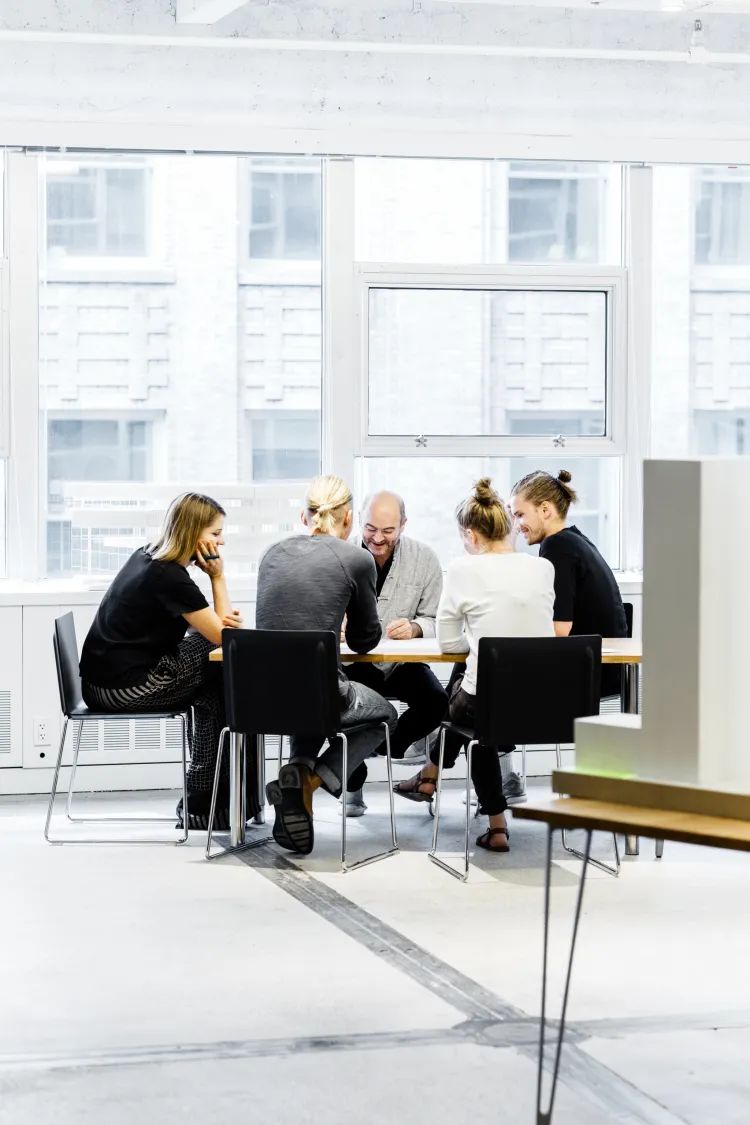
Photo of New York office ©Snøhetta
We have 7 offices now in different parts of the world, and the office in New York is one of our larger offices within our company. The majority of architects are in New York with about eighteen landscape architects, forty-three architects, four interior architects and a team of communications people and administrative. We also have a small studio in San Francisco. The SF and NYC offices sit in two places, but we operate them as a single entity. Generally, our business is focus within the United States. Most of our work right now is in Canada, US and a little bit in South America.
Although our offices have a little bit of a geographic focus, they are not mutually exclusive. We collaborate our work together. We want to have that personal connection. So that geographic focus, I think helps with it. There are many things that are shared across all the offices. We, as a practice, are committed to that idea and way of working with different disciplines and people from different places.
The one thing you would find in every office is that we have a large amount of space that's devoted to large tables where we can come together and really do work together. We also provide a communal space in our offices where we often sit and have lunch together. We have workshops with our clients. And we make drawings and models and explore ideas not only with the people working in Snøhetta, but also with our other collaborators. Our clients are usually a group of people who come from different agencies or different parts of an organization. And I think what ties us together is the way of working and approaching the work together.
█ 在项目设计中,你们会包揽建筑、景观设计甚至是室内设计吗?
When working projects, will your office take over everything from architecture, landscape architecture and interior?
M:我们一直都在努力进行跨学科的合作,哪怕只是设计一个室内的项目,一把椅子,或是一个公共室外空间。我认为,客户之所以经常选择我们,就是希望我们可以提供上述各种方面的设计服务。
负责任地说,我们几乎所有的项目都是既负责建筑设计又负责景观设计的。通常,这也意味着需要进行室内设计。当然,有些时候客户找我们只是想做文化建筑单体,我们就会和他们沟通,表达我们以自己的工作方式来做项目效果才会达到最好。在后续的交流和工作的开展中,也逐渐在向我们所希望的多学科协同合作的方式去靠近。
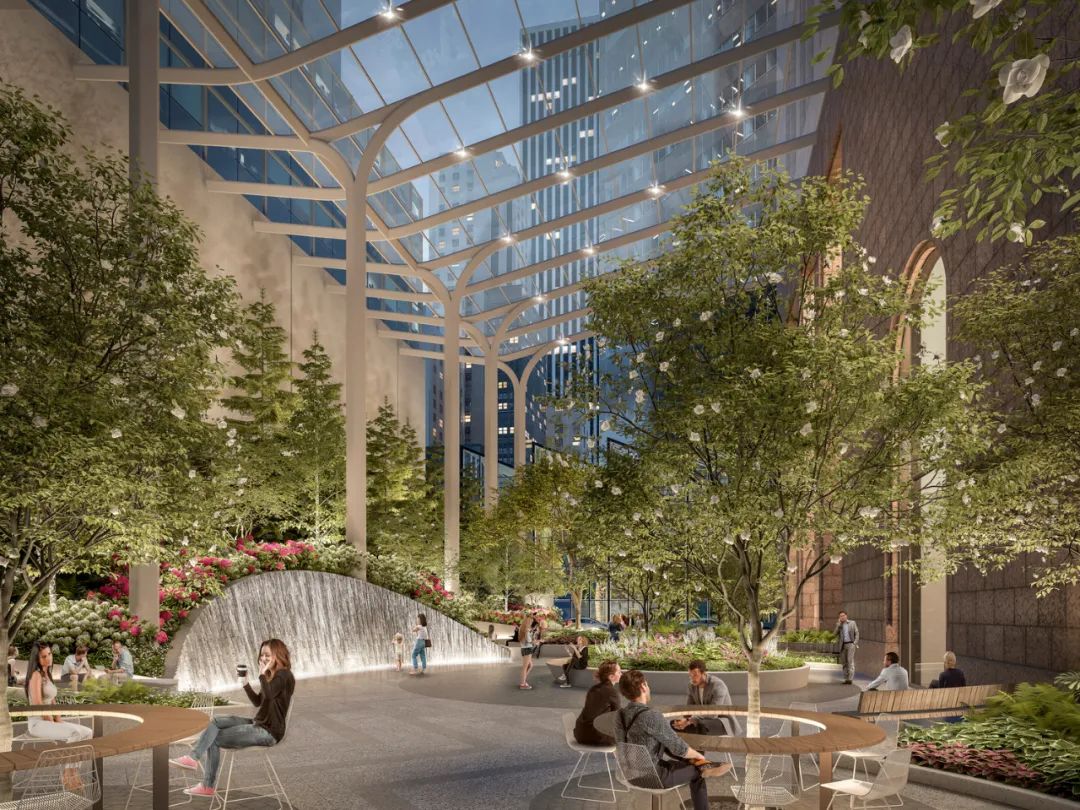
550 Madison Public Garden Rendering, ©Snøhetta
We try to bring people together across the disciplines. Even if it's an interior project, an object, like a chair or something, or a landscape architecture space of public space, we will still engage within the studio across the disciplines. I will say though, that people often hire us because they want us to provide all of those services.
I should say almost all, we rarely have a project where we're not responsible for both architecture and landscape architecture. And typically, that means interiors on some level. But we sometimes have that happen during the selection process when we're brought in. Some clients have hired us because they have a cultural building that they want us to do. Then we say, for us to do our best work, it's important that we work in this way. And then we continue that dialogue and it evolves through that. But it's always a presence in the way we're looking.
█ 美国第二大瀑布威拉米特瀑布滨水景观是你和团队正在进行的项目,现在已经在施工过程了么?可以分享一下设计背后的故事么?
The Willamette Falls Riverwalk is the project you are working on right now. Is it under construction? And what is the story behind the design?
M:这个项目自2015年开始到现在已经进行了很多年了。场地的情况十分复杂,而且客户由多个公共机构组织共同构成。
波特兰通用电气公司一直在使用水力发电的大坝。坝河两岸土地的持有者之间有很深厚的联系,其中的一个持有者在去年夏天刚刚买下了我们的设计场地。所以当我们开始施工的时候,土地所有者与之前不一样了。当地的公共机构,包括市级、县级和州政府和地铁公司建立了伙伴关系并且与土地所有者达成共同协议,征用其土地以开放河岸给市民休闲使用。从这一角度出发,我们也在努力进行项目愿景勾画和概念设计。
当场地土地持有者发生改变的时候,我们正在进行项目第一阶段的施工。他们对于我们将河岸开放给公众的想法非常赞同,并也逐步参与到项目中来。当然,我们整个的工作方式也根据现在土地持有者的意见做了一些调整,未来我们也还要继续与其进行外沿服务合作和相互学习。我们希望通过我们的努力,在第一阶段的设计施工完成后,公众可以回到这个150年来都被工业行业占领而无法安全通行的河岸。
在这个行业中,耐心十分重要。这个项目的资金都是以不同的形式来源于各种渠道的,因此我们希望对所有人的提出建议都有所回馈,也十分理解并愿意去接受场地的各种复杂关系。在保留而不是清除场地的现有情况意味着实现我们的设计想法会是一个很艰辛的过程。但是我仍然很乐观,并且认为终有一天这里会变成一个让人觉得不可思议的场所。
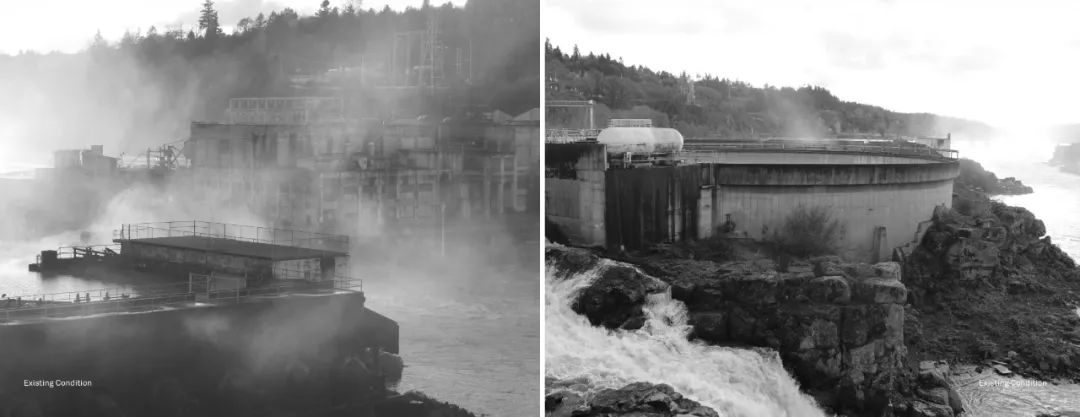
一个多世纪以来,这个令人惊叹的地方一直被沿水边修建的工业基础设施切断了公共通道 ©Snohetta
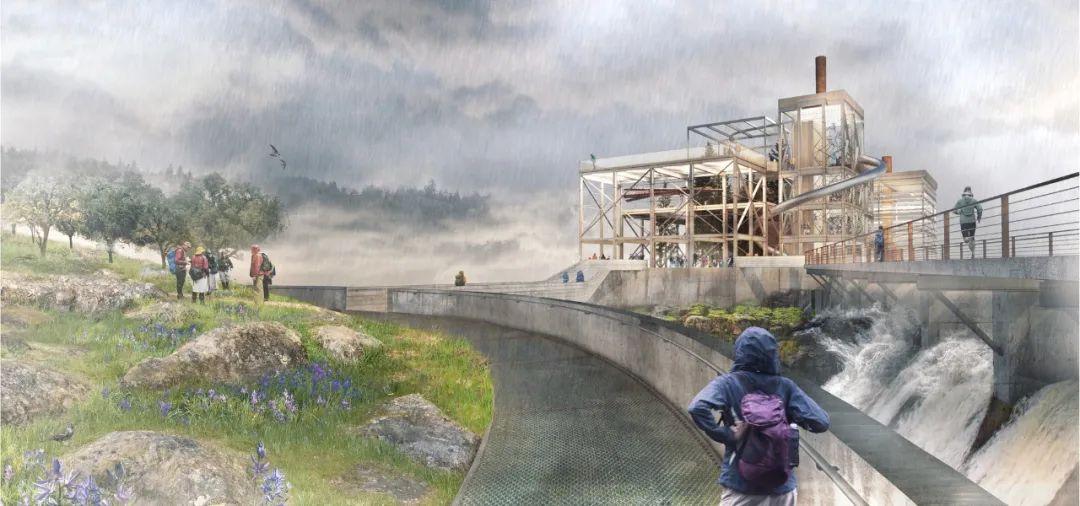
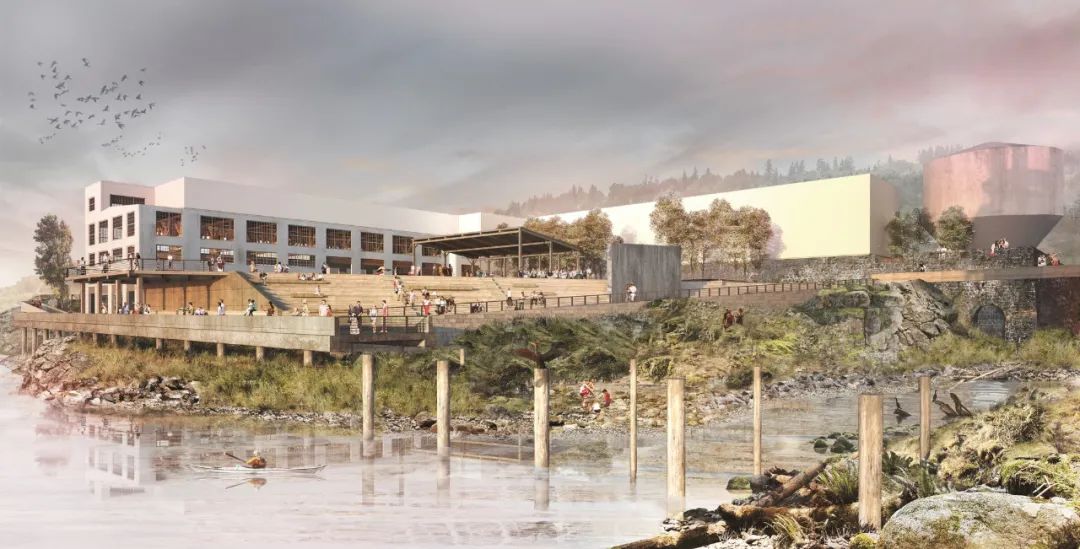
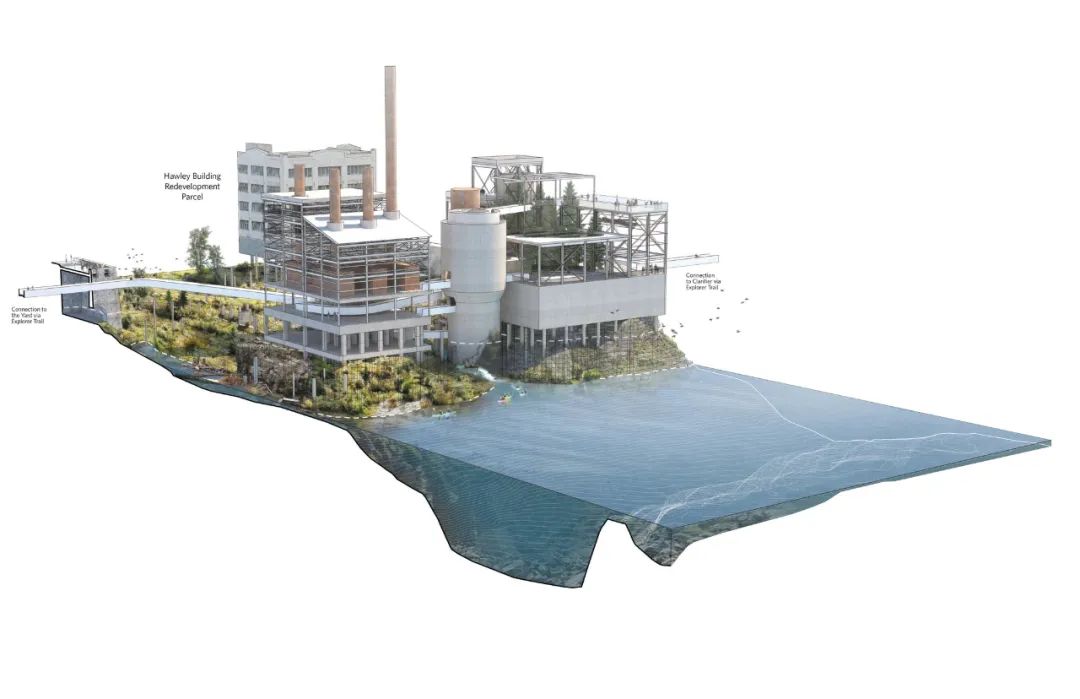
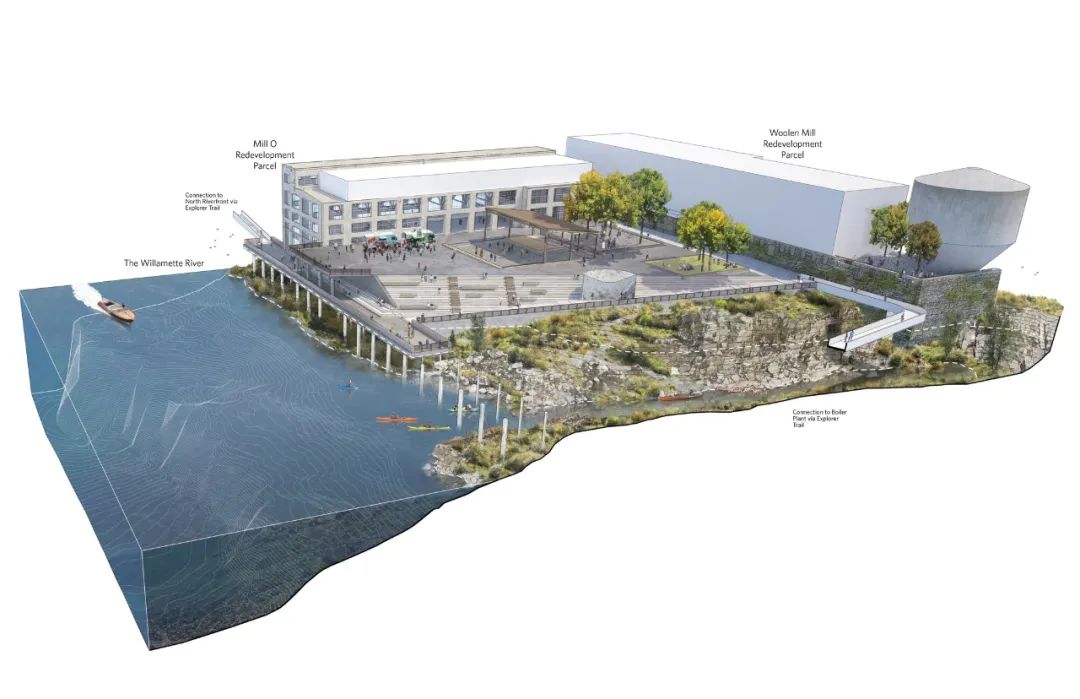
Snøhetta主要公共景观的设计希望将找回完整的瀑布的高度和崎岖的海岸线,重新连接其壮观的海滨城市 ©Snohetta
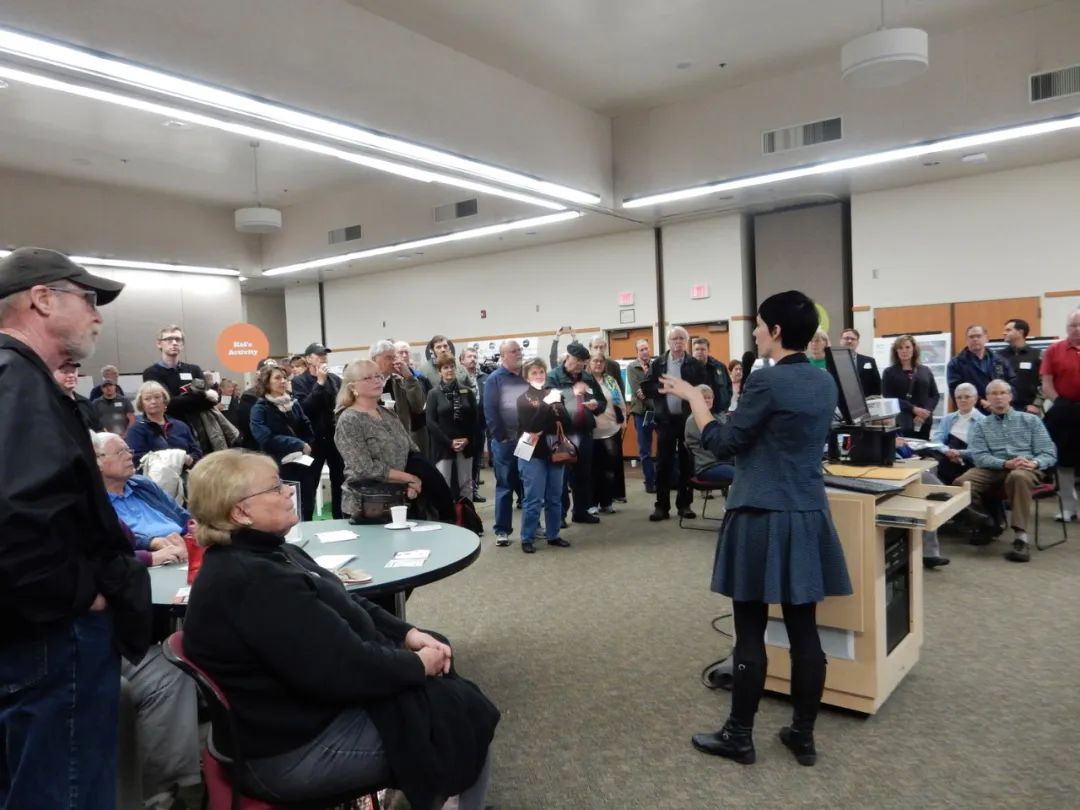
Public Engagement Process for Willamette Falls Riverwalk Restoration © Snohetta
We started in 2015. It's been a while, but this is one of those places that is incredibly complex. Multiple public agencies are part of this client team.
Portland General Electric still operates the hydroelectric dam. Several confederate tribes have deep connections. And one of the tribes just purchased the site this summer. So when we started our work there was a different landowner. The public agencies include the city, the county, the state, and the metro government. They had formed a partnership together and an agreement with the landowner to have an easement to provide public access back to the riverfront. So we were working to do the vision and the concept design through that lens.
We had been working on the first phase when one of the tribes purchased the land. And they have been getting more and more involved. They're very excited about continuing to move towards the vision that we put together. But it changes our way of working a little bit. And there's just an ongoing need for outreach and learning. I think we'll be working towards phase one which will open up access and be able to bring the public back to this site. Because the site has been used for about 150 years for being industry. It's been closed and not safe for people to just walk through.
Patience is really important in this profession. I know funding is coming from different sources and in different ways. We want to make sure that all voices are heard and that the complexity of that site is valued. And I think, in fact, retained and not wiped away means that there's a process that has to be incredibly rigorous and diligent. But I'm very optimistic. And I think one day it'll be a pretty incredible place.
█ 我认为这是一个极具挑战的项目,尤其是河岸两侧都被工业遗存所占据。对于生态方面,你们是打算如何维护呢?
I think it's a very challenging project because it has other industries surrounding the riverfront. So how do you rein restore the ecology?
M:通过调查研究历史照片和与自然科学家、水文学家的合作,我们已经发现了很多维护的生态可能性。尤其是从生态栖息地的角度看,这个项目为消除阻碍栖息地发展的不良因素提供了一个很好的契机。比如,今天在现场,你很难发现历史遗留的水渠穿过场地。在一些地方,栖息地被水填满,自然高地上建成了新的平台。如果我们可以像做外科手术一样把这些移除,我们就可以和生态学家、科学家合作,恢复作为动植物新家园的生态栖息地,并使之成为自然河岸景观的一部分。
虽然这一切在当下还很难看到最后的成果,但是得益于场地潜在的巨大可能性以及客户和周围社区的强力支持都会使其在未来实现我们的设想。
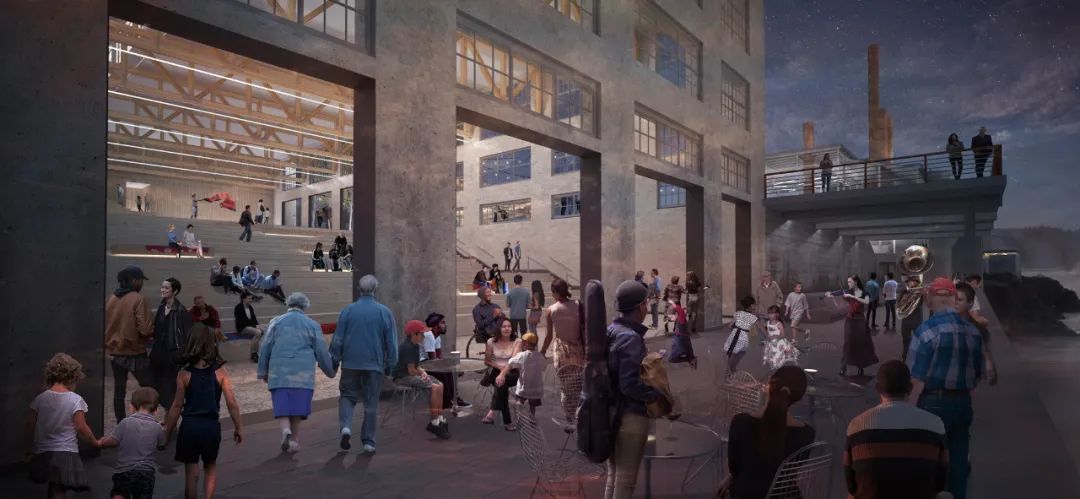
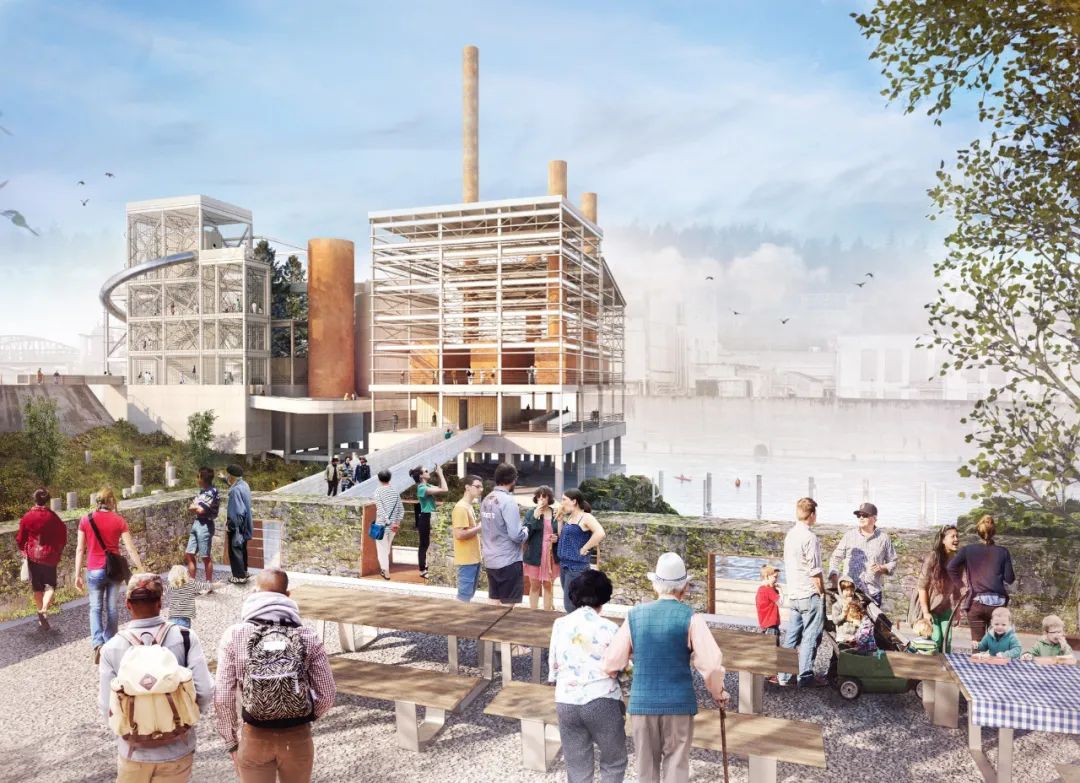
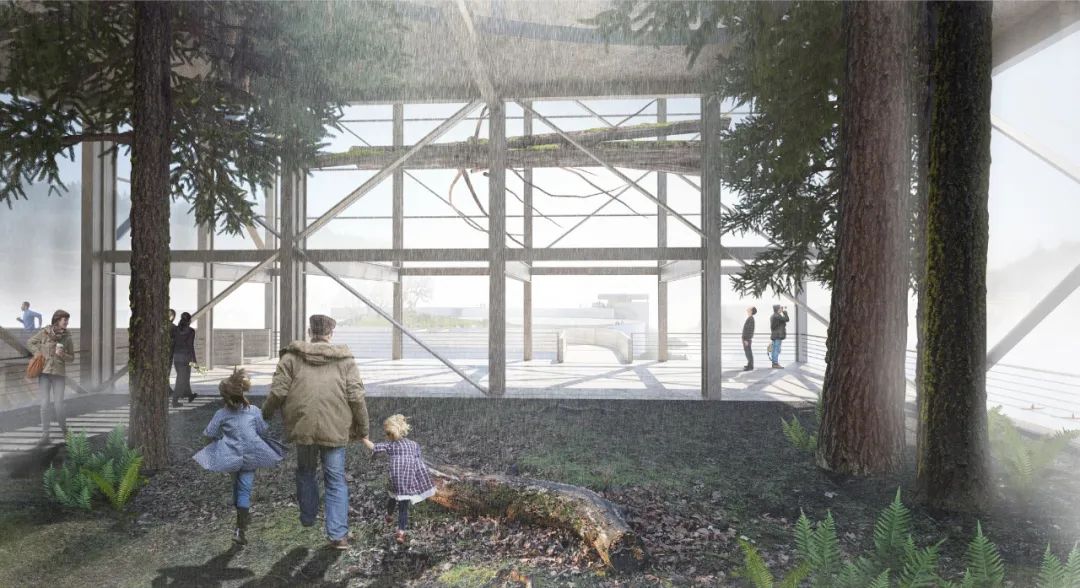
©Snohetta
By studying the surveys, historic photos, and working with scientists, hydrologists, and natural scientists, we found that there's so much that's already in place. So especially from a habitat standpoint, there's a great opportunity to remove some of what's there that is keeping the natural habitat from flourishing. We're doing that very surgically to open up areas that can provide new homes for habitat. For example, you can't easily see when you're on-site today that there are historic tailraces that come through the site. In some places, these habitats have been filled in, or a platform built over the natural landform. If we just remove that, then we can come in and work with ecologists and scientists to restore habitat in places that are perfectly natural for it to be there as part of this soft ecology riverfront.
It's hard to see right now, but there are incredible potential and a huge commitment from the client group and the community around that being a real core part of the future.
█ 设计师有时会遇到客户改变想法,甚至最终选择了其他设计师的作品。您对于遇到这样的情况会怎么处理?
Designers sometimes meet the situation that their clients change or choose another work in the end. Do you have any suggestions for that situation?
M:我希望大家可以看到项目设计过程本身的价值。只要你享受并且珍惜这个过程,始终保持好奇心并从中汲取灵感,即便因为种种原因使得项目最终没有建成,那些与其他人一同工作,开拓自己视野的过程依然是很好的经验。
另一方面,在公司从事设计工作的好处是,你会接触到与你日常生活的地方不同的社区文化和环境,而且在你不熟悉的环境中工作会为你打开一扇新的大门。在这个过程中,你会面临很多挑战,为了建立设计与当地的联系,你需要通过当地的合作伙伴来了解该场地。
I imagine for others to see the value in the process. If you can enjoy and value that process and be inquisitive and curious and pull inspiration from that, when something doesn't work out, that experience of spending time with people in that openness is an invitation.
On the other hand, one of the benefits of working for firms is that you work in different communities from where you live. Your eyes are wide open when you're working in a place that you're less familiar with. There's a lot of challenges and we rely a lot on our local partners in relationships to learn about that place. Because the place is really where the work comes from and where we want to connect to.
█ 您提到过曾经与丈夫一起设计了他的餐厅。这同样也影响了您的工作和设计的方式。您能分享一些其中的故事么?你们是怎么相互影响的?
You mentioned that you worked with your husband on designing his restaurants. And it also influences the way you work and design. Would you like to share more stories? And how would you influence each other?
M:当你和某个人结婚后,你们会在一起谈论任何事情。我认为与有创造力的、热爱塑造空间的、并思考自己所创造的空间会被如何使用的人建立关系,会对彼此产生很大的影响。不论我们所从事的领域是什么,这些想法都会自然而然、从内而外地分享给彼此。
他从事的领域是餐饮业。但是,我从他对于与人互动的看法中学习到了很多。我对他一直很欣赏的一点是,他将餐厅视为一种身临其境体验的发生地。他认为,食物只是餐厅之所以吸引人们前去的一部分原因,而更多的原因则是在邀请人们进入到一个社交空间来获得一次惊喜的、美好的、微微不同于日常生活的体验。虽然我们所从事的领域不同,但是我们都很赞同这一理念。
他同所有设计师一样,十分清楚自己想要什么,我也很尊重他的想法。在他的领域,我更多的是起到一个提供更多的设计可能性的辅助角色。反过来,在我的领域也是同样的。所以,我不会说是我们一起设计了他的餐厅,因为我更多的是在支持他以及提出一些自己的看法。但整个过程真是棒极了,我也确实帮助他建造了其中的一些空间。
在我的职业生涯中学到的是,当你有机会亲手建造某些东西时, 你会用不同的方式思考设计。我们以前时常会开玩笑说,等餐厅建成了我们就可以结婚了,我们一同顶住了那些压力,因此我们可以保持一个长期的关系。现在距离我们结婚也已经过去一段时间了,当初的玩笑也已经成真。
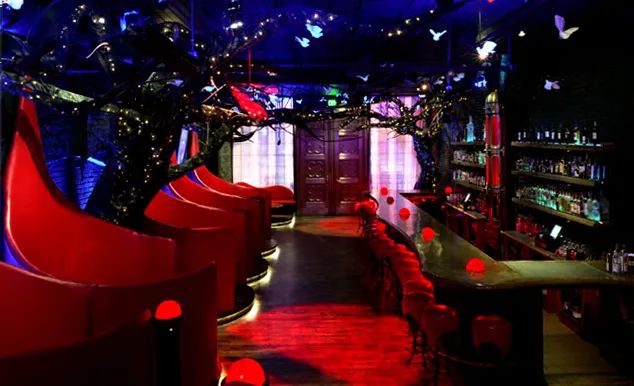
Mario's Double Daughter's Salotto, Denver, CO
When you're married to someone, you talk about everything. I think it has had a strong influence to have a relationship with someone who is creative, designing spaces, and thinking about how people inhabit those spaces. Those are all shared across inside and outside whatever we're doing.
So, his platform happens to be restaurants. I think I've learned a lot from his point of view about observations and engagement with people. And one thing I’ve always admired about him is that he sees a restaurant as an immersive experience. Food is just one part of going to a restaurant from his point of view. It is just one component of inviting people into a social space to have an experience that takes them a little bit out of their daily life with something surprising or beautiful. I think we share this thread regardless that our disciplines and areas of working are very different.
He has a very strong idea about what he likes just like any designer. I respect that. And when I’m in that realm, I am more someone to bounce ideas off and help in any way that I can. And the same in my realm. So, I would not say by any means that we design his restaurants together but I’m mostly there to be supportive and offer ideas. It's been amazing. I’ve helped him literally build some of those spaces.
And what I’ve learned over my career doing that is that I think when you have the opportunity to build something, you really think about design differently. We used to joke that once we built that together, the restaurant that I showed earlier today, that we knew we could get married because we could go through that kind of stress. We knew we could have a long relationship together. It's been a while now. So, it seems to work.
03 / 给设计专业学生的建议
Advice for Design students
█ 您曾在科罗拉多大学执教。考虑到您的教学经验和实践经验,您认为学生在学校里应该着重学习些什么?对于他们您有什么建议么?
I know you taught classes at the University of Colorado several years ago. Considering your teaching experience and practice experience, what do you think students should learn at school? Do you have any advices for them?
M:我认为可以从不同的角度来思考这个问题。学校是一个来学习和形成自己设计脉络和思考方式的地方。所以你需要保持好奇心,去找到可以清晰表达你想法的方式,明白你的想法的重要体现在哪里,又是什么促使它形成,以及你要如何用不同方式把你的想法传达给他人。我认为你还需要学习如何众多的设计可能性、之前的研究和前期分析中提取出核心想法。从周围信息中提取并消化成你所理解和掌握的信息是最应该学习的能力之一。
当然,景观设计是一个非常技术性的职业,我们需要学习很多东西才能最后落成一个设计。所以我想说,了解行业的复杂性也是十分必要的。外界因素既可以成就一个项目也可以摧毁一个项目。对此感到好奇并知道我们并不是一个孤立的领域十分重要,无论你的设计想法多么出彩,如果你不能向外界传达你的想法或是不理解预算和项目的限制,再好的想法都无法实现。
当然,学习画画和通过接触其他领域以不同方式获得灵感对设计也很有帮助。我们都知道现在的电脑绘图工具对于我们快速表达设计想法很重要。但是我认为在学生时代,更重要的是尝试和学习不同的表达媒介,比如手绘,手作模型等等,这样你的思想和身体都参与到设计过程中帮助你获取灵感。另外,我认为学习不同的绘图方法也非常重要,原因是你可以探索不同的想法并且通过不同的绘图方式交流你的想法。这样,你用不同的绘图方式就学到了不同的东西。
我不是说不要学习电脑绘图软件,这也是设计的表达方式之一,但是我认为我们有时候太依赖于此了。我喜欢把电脑里的图按比例打印出来,这样会让我有更好的尺度感。在公司里,我希望所有的图都是有比例的。这样在我想在设计中加些东西的时候我可以很方便地测量尺寸,在测量之后我就可以跟同事说,做个15英寸的东西比较合适。我们在所设计的空间里感觉会是什么样的呢?想必我们只有把自己放进那个空间才会有直观的想象,因为无论如何,空间不是一个供人观赏的物体,对吧?
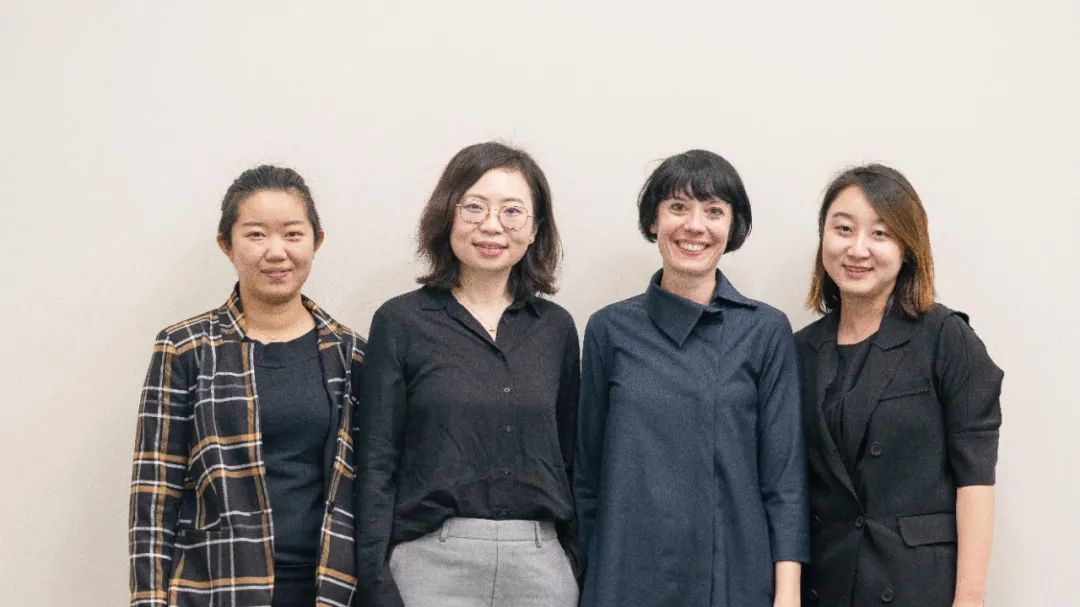
ArchiDogs interview with Michelle Delk at ASLA’19 San Diego
I think that you can think about this in different ways. I think this is the time to learn and form a process for yourself of design and way of thinking. So, you need to be curious, really try to find ways to clearly communicate your ideas, why they are important, what's informing them, and how to communicate them to the people that you'll be working within any number of ways. I think you need to learn how to communicate and investigate ideas and extract out of so much possibility, research, and exploration that happens. Extracting and editing something that you can really get your arms around is one of the most important things to learn.
Of course, this is a very technical profession. And there's a lot of things we have to learn about how to execute our work. So also I would say it’s important to understand this and get an idea about what that complexity is. Everything that influences us can build and execute a project. Being curious about that and knowing that it's not an isolated realm. It doesn't matter sometimes how amazing your design idea is. If you can't talk to people about it or understand a budget and the constraints around what you can build, then it won’t happen.
Obviously, learning to draw and explore ideas in a variety of ways is also very helpful. We all know that the digital tools that we have are incredibly important and useful in allowing us to rapidly explore and express ideas. But I think when you're a student, it is better to experiment with and learn different ways of drawing, modeling, making things with your hand so that you can design both with your mind and with your body and be able to explore and feel sketching. I think learning different tools and methods of drawing is really important. And I guess the reason I think that's important is that we can explore different ideas and communicate ideas through these different methods. And you learn different things by drawing in different ways.
I am not saying don't learn digital. That's one of the ways we can draw and communicate. But I think there is sometimes too much reliance on it. Understand the scale and take things out of the computer and print it to scale. I want everything to have a scale at the firm. I want to have something so I can measure it. And then I can say to you, does something that is 15 feet feel good. What's the feeling like for us to be in that space? Because we have to put ourselves in the space when we're imagining it. It's not an object, right?
「讲座推荐Michelle Delk at GSD」
Daniel Urban Kiley Lecture
https://www.gsd.harvard.edu/event/michelle-delk/
时长 78 mins
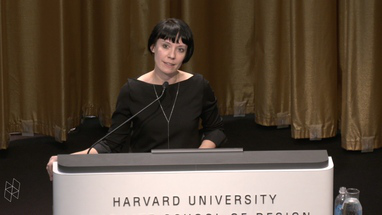
Michelle giving a lecture
作为纽约市城市设计论坛的活跃董事,文化景观基金会管理委员会的成员,Michelle在世界各地参与会议,也在大学和社区发表演讲。这一讲座介绍了她在Snøhetta的一些项目项目实践,包括占地22英亩的后工业遗址生态修复:俄勒冈州的威拉米特河瀑布景观设计,布莱斯德尔中心的再设计,以及曼哈顿中城一个重要的公共广场设计。
访谈|栗茜Sherry Li, 杨淏玥Haoyue Yang
文案|杨淏玥Haoyue Yang, 潘雨辛Yuxin Pan, 李鑫然Sara Li
摄影|Chao Sun 孙超
编辑|Winnie
审核编辑|Yibo
版权©建道筑格ArchiDogs,转载请联系media@archidogs.com
若有涉及任何版权问题,请联系media@archidogs.com,我们将尽快妥善处理。

